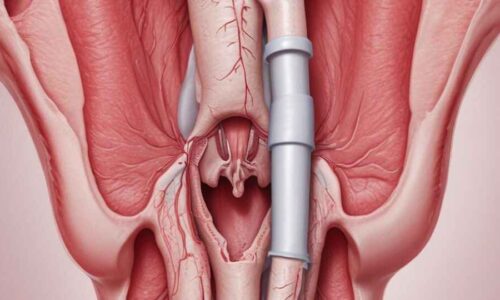
What Causes Uterine Fibroids to Grow After Menopause?
Uterine fibroids, sometimes referred to as leiomyomas or myomas, are noncancerous uterine growths that frequently manifest throughout a woman’s reproductive years. Although benign in most cases, these fibroids can continue to develop even after menopause, when a woman’s levels of reproductive hormones like estrogen’s and progesterone sharply decline. This occurrence raises various problems, including why uterine fibroids continue to develop and what causes them to do so in postmenopausal women.
The Role of Hormones
Uterine fibroids form and expand mostly as a result of hormones. The production of estrogen’s dramatically decreases after menopause, altering the hormonal equilibrium. Unexpectedly, some women continue to have hormonal changes even after menopause, which might help uterine fibroids develop.
Genetic Predisposition
Uterine fibroids may also be influenced by genetics. You could be more prone to getting fibroids if your family has a history of having them. Even after menopause, you may still have this inherited propensity for fibroid development.
Hormone Replacement Therapy (HRT)
To treat menopausal symptoms, some women decide to use hormone replacement therapy. HRT, on the other hand, entails taking estrogen’s, which might promote fibroid development. Consult your doctor about the possible effects of HRT on fibroids if you’re thinking about it.
What Causes Uterine Fibroids to Grow After Menopause?
You might be wondering now why uterine fibroids grow after menopause in particular. It’s crucial to remember that fibroid growth during this period might be influenced by a number of the aforementioned causes. A favorable environment for the formation of fibroid may be produced by the interaction of genetics, hormone changes, and lifestyle decisions.
Symptoms and Complications
Understanding the causes of uterine fibroid growth after menopause is essential, as it can help women recognize potential symptoms and complications. Although fibroids are generally noncancerous, their growth can lead to various discomforting and problematic issues.
Symptomatic Fibroids
While not all fibroids cause symptoms, some can lead to significant health concerns. Postmenopausal women may experience symptoms such as pelvic pain, heavy menstrual bleeding, frequent urination, and even backache due to the growth of these fibroids. These symptoms can significantly impact a woman’s quality of life.
Complications
In some cases, fibroids can lead to complications, especially if they grow to a substantial size. These complications may include:
- Uterine Enlargement: Large fibroids can cause the uterus to expand, leading to a noticeable abdominal protrusion.
- Urinary Issues: Pressure on the bladder due to fibroid growth can result in frequent urination or difficulty emptying the bladder fully.
- Bowel Problems: Fibroids pressing against the rectum can lead to constipation or difficulty with bowel movements.
- Infertility: While rare, fibroids can sometimes interfere with fertility, making it more challenging for women to conceive.
Management and Treatment
Given the potential symptoms and complications associated with uterine fibroids, postmenopausal women should be aware of their options for management and treatment.
Monitoring
For women with asymptomatic fibroids or mild symptoms, regular monitoring by a healthcare professional may be sufficient. This typically involves annual check-ups and imaging tests to track fibroid growth.
Medications
In some cases, medications such as hormonal therapy or nonsteroidal anti-inflammatory drugs (NSAIDs) may be prescribed to manage symptoms. These can help control heavy bleeding and alleviate pain.
Minimally Invasive Procedures
For women experiencing significant discomfort or complications, minimally invasive procedures like uterine artery embolization (UAE) or myomectomy may be recommended. These procedures target the fibroids directly and can often preserve the uterus.
Hysterectomy
In severe cases where other treatments are ineffective or if there are concerns about cancerous fibroids, a hysterectomy (removal of the uterus) may be considered. However, this is usually considered a last resort due to its irreversible nature.
Conclusion
In summary, the growth of uterine fibroids after menopause is a complex interplay of hormonal factors, genetics, lifestyle choices, and dietary habits. While not all women will experience significant fibroid growth postmen pause, it’s crucial to be aware of the potential symptoms and complications and to consult with a healthcare professional for proper evaluation and management options. By staying informed and proactive, women can take control of their health and well-being, even in the face of uterine fibroids.
Dr. Aiman Khan
Dr. Aiman Khan is a dedicated healthcare professional and talented content writer, blending her medical expertise with her passion for writing. Holding a degree in Unani Medicine (BUMS), Dr. Khan has embraced her role as a part-time content writer at DiseaseInfoHub, where she contributes insightful articles on health and medical topics.




